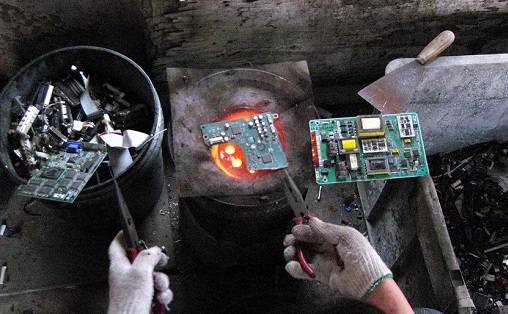The new eco-design requirements regulation in the EU[1] is hailed as the first step to Right to Repair legislation across the EU. An interesting aspect of the new regulation, that is overlooked in most reporting, is that the regulation also provisions for end-of-life dismantling instructions for electronics and enforces that this must be easy.
A lot of electronics at the end of their lifecycle, or very close to it, are exported from the developed ‘core production’ countries to developing peripheral countries. Often because of the weaker environmental regulations in those countries. Much of the electronic waste is also traded illegally though, abusing poor controls of customs or simply by bribing, with estimates stating around 80% of international e-waste trade is ‘informal’[2]. This waste is oftentimes dumped on open-air landfills and poses a great toxic hazard to local communities.
One of the main reasons that e-waste is not processed at the source (the country of the user that discards a device) is the complexity of electronics. It is costly to break end of life electronics down to their core components and then further process these components into re-usable resources. Though that second point will not be solved by the new eco-design regulations, the first point can just be the tipping point to make it economically viable to process more e-waste close to the source. Meaning it will be processed more often in countries that are better suited to treat hazardous materials in a safe way. And for the millions of tons of e-waste that are still dumped in developing countries annually, the easy dismantling can even improve conditions there over the current status quo and save lives.
[1] https://ec.europa.eu/energy/en/regulation-laying-down-ecodesign-requirements-1-october-2019

